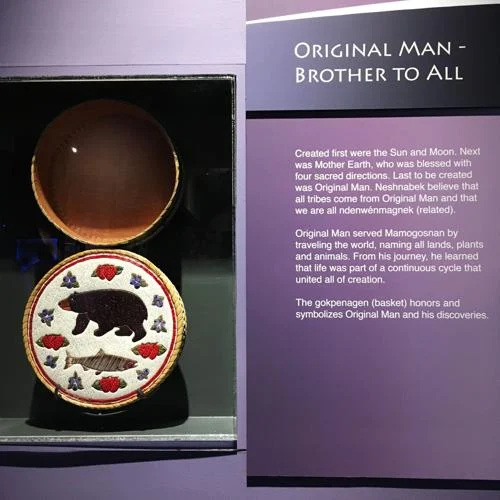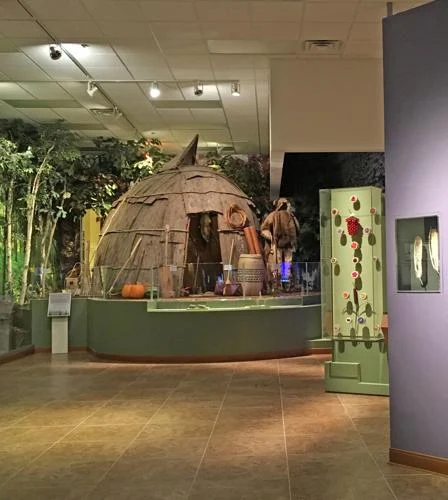From the Norman Transcript: Strength from Tragedy
- Stacy Cramer Moore

- Apr 26, 2023
- 4 min read
This article was originally published in the Norman Transcript on April 16, 2023 and was authored by Elaine Warner.
------
Let’s start with a bit of history. With Indian Removal in the early 1800s, tribes were assigned areas in what would become the state of Oklahoma.
The five “Civilized Tribes,” Cherokee, Choctaw, Chickasaw, Creek, and Seminole, occupied almost the entire area with two exceptions.
The Quapaw and Seneca tribes were assigned small portions of the northeastern corner. The panhandle still belonged to Mexico.
The Creek and Seminole tribes were given a large swath of central Oklahoma stretching from near Fort Gibson to the western border. Following the Civil War, some of the Creek/Seminole section was ceded to the Sac and Fox, Potawatomi, Shawnee and Kickapoo peoples.
Boundaries shifted, tribal territories shrank, and settlement kept encroaching. By the 1890s, the Indians, although named possessors of territory, were pretty much kicked to the curb. The most obvious remnants of their occupation were the names given to counties, towns, and streets: Pottawatomie County, Shawnee, and one of Shawnee’s main streets, Kickapoo.
While both the Citizen Potawatomi and the Absentee Shawnee nations have tribal headquarters in Shawnee, the influence of the Citizen Potawatomi Nation is most obvious to visitors.
As a writer, the difference in spelling between the county and the Nation bothered me. Blake Norton, Director of the Citizen Potawatomi Nation Cultural Heritage Center, explained, “Both spellings are phonetic, but Potawatomi is closest to the real word.” and the Cultural Heritage Center is where you should begin your exploration.
A discriminating choice of artifacts, gorgeous graphics and interesting interactive elements are thoughtfully organized to help visitors understand both the cultural heritage of the Nation and the historical influences on and by its people. The narrative begins with their foundation story and tribal legends. The tribe originated in what is now Maine and eastern Canada, then migrated to the Great Lakes region.
The first of several large displays depicts Potawatomi women working with rice. Wild rice was considered sacred and served not only as nourishing food but was used as medicine and in ceremonies. Potawatomi bands remaining in the Great Lakes area have preserved many of these traditional customs.
The Citizen Potawatomi are one of seven Potawatomi bands recognized in the U.S. There are two other First Nations recognized in Canada. The Citizen Potawatomi’s own designation for themselves is Zhishibéni or Duck People.
Exhibits take visitors through Potawatomi traditions, interactions with other tribes and the coming of Europeans. You’ll review a lot of American history – and a lot of history you didn’t know.
Tribal history takes a darker turn with the era of Indian removals. In spite of good relations, even intermarriages with Europeans, the Potawatomi were not spared Andrew Jackson’s harsh policies. A council to discuss removal was called by the government. When tribal leaders arrived, they were arrested and put in shackles. The army scoured the nearby forests to round up tribal members who sought to resist. This was the beginning of the best-documented Potawatomi removal, known as the Trail of Death.
Eight-hundred and fifty-nine Native Americans were forced marched from their northern Indiana homes to Kansas. One of the most touching displays in the museum is a wall of moccasins created by members of the Potawatomi community. Each pair represents ten of the participants on the Trail.
To really appreciate all the museum has to offer, plan to spend at least and hour – I spent two and could have spent more time there.
Also in this area of town, you’ll find the tribe’s FireLake Casino and FireLake Golf Course. If you’re hungry, both the Casino and the golf course have sandwiches and a small shop near the casino has nishnabe tacos. That name, rather than Indian tacos, is a whole ‘nother story.
The other do-not-miss Potawatomi project is the Grand Casino Resort. Jack and I spent the night at the Casino hotel – an attractive and comfortable stay. The staff members who checked us in couldn’t have been more welcoming. They answered my myriad questions patiently – by the time we checked out the next day, I felt like I’d made new friends.
Greg Cox, Player Development Manager, took me on a tour of the resort. The largest area is, of course, the casino. There are 1,450 electronic games and more than 30 table games but the floor does not feel crowded. Players can play machines with pennies or play higher stake machines up to $100 dollars. A tour of the casino is worthwhile whether you are a gamer or not. The video screen above the food court on the first floor is worth seeing.
Options in the food court include Mexican and Italian dishes, ramen, barbecue, coffee and sweets. Self-serve stations offer free ice cream, soft drinks, coffee, and tea. On the second floor the Fire and Ice Bar serves alcoholic beverages. Nearby, a lounge features live music on Friday and Saturday nights.
A concert venue hosts larger concerts. The Foreigner concert, April 29, has been sold out for months. The conference space serves a double purpose. In addition to hosting meetings and events, the area is constructed as a storm shelter designed to keep guests safe even during an F-5 tornado.
Other amenities include a full-service spa – I got to enjoy a great massage – and a roof-top pool. Golf packages for FireLake Golf Course are available.
Diners have several options besides the food court on the gaming floor. The Grandstand Sports Bar with lots of TVs for fans serves casual favorites. The Grand Café is quieter and serves an excellent breakfast at an amazingly reasonable price. My chicken avocado sandwich for lunch really hit the spot. Flame Brazilian Steakhouse is open for dinner Wednesday through Saturday. The décor is sophisticated, and the salad bar includes such exotic items as fresh oysters.
There are more than 130 casinos and over 80,000 slot machines in Oklahoma. I asked Greg Cox what made the Grand Casino stand out. He replied, “Good enough isn’t good enough. We’ve got to be better. We hire good people. The personal connection is primary. We out-people the other casinos.”
See the original article published at the Norman Transcript here.
















